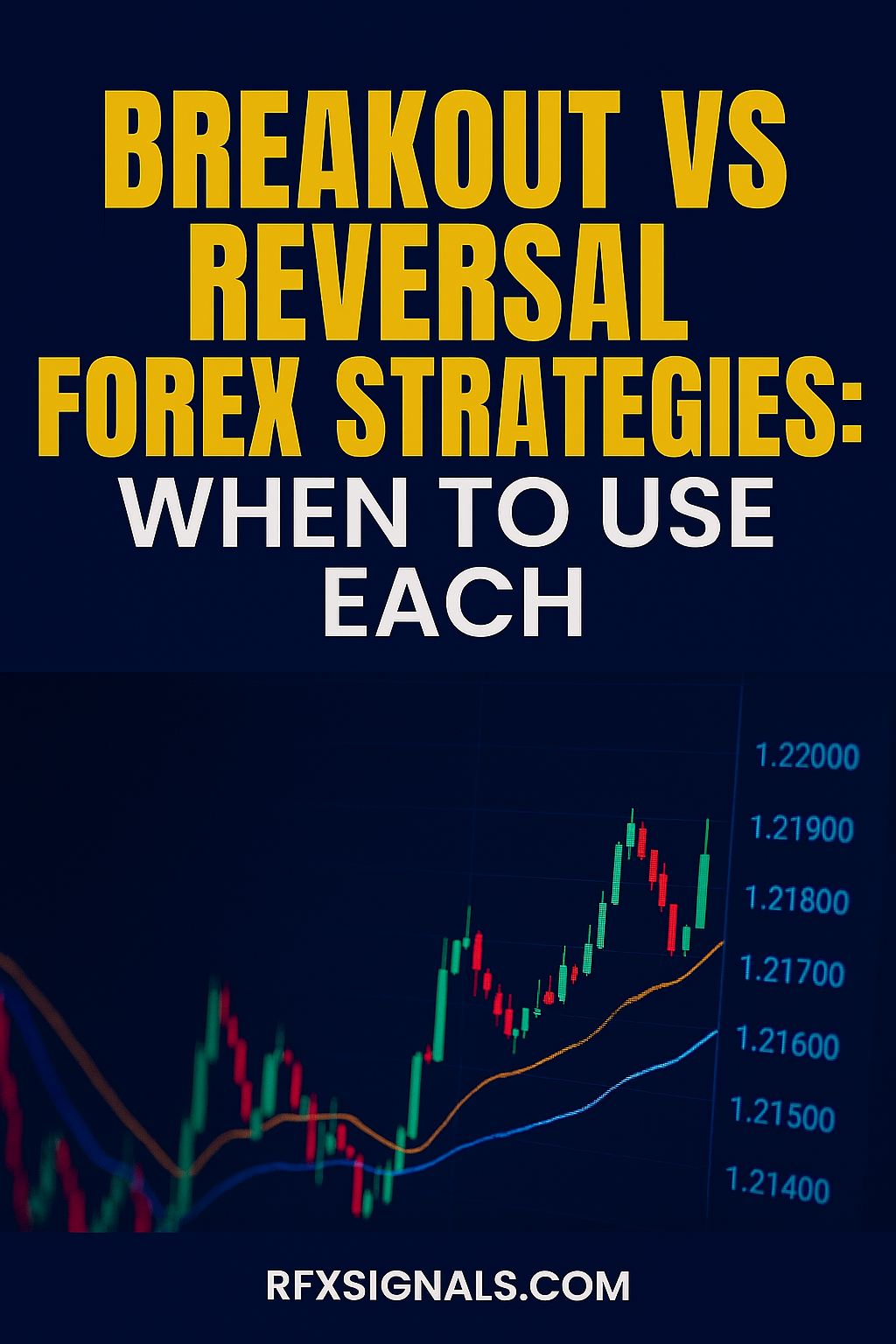Join RFXSignals channels to receive real-time setups, including breakout entries and reversal alerts with annotated charts.
What is a Breakout Strategy?
A breakout strategy involves entering trades when price moves beyond a key support, resistance, or consolidation zone. The idea is that the breakout signals the beginning of a new trend, driven by an imbalance between buyers and sellers.
- Types of breakouts: continuation breakouts (trend continues) and reversal breakouts (false range, new trend starts).
- Common tools: support/resistance levels, trendlines, Bollinger Bands, and volume analysis.
What is a Reversal Strategy?
A reversal strategy aims to catch turning points in the market. Traders look for overextended trends that are losing momentum and prepare for price to shift in the opposite direction.
- Reversal signs: divergence with RSI/MACD, candlestick patterns (e.g., hammer, engulfing), support/resistance holding strong, or failed breakouts.
- Risk factor: picking tops and bottoms can be high risk; stops are essential.
Pros & Cons of Breakout Strategies
Advantages
- Catches strong trends early.
- High reward potential if breakout sustains.
- Clear entry triggers from price levels.
Disadvantages
- False breakouts are common.
- Requires quick execution and discipline.
- Choppy markets lead to repeated small losses.
Pros & Cons of Reversal Strategies
Advantages
- Great risk-to-reward potential (tight stops).
- Opportunity to profit before the crowd recognizes the trend change.
- Useful in range-bound or overextended markets.
Disadvantages
- High failure rate if trend is strong.
- Psychologically tough — requires going against crowd sentiment.
- Can result in frequent stop-outs if mistimed.
When to Use Breakout vs Reversal Strategies
Breakout Strategy is best when:
- Price consolidates before a news event or session open.
- Strong momentum builds after economic data releases.
- Chart patterns form (triangles, rectangles, flags).
Reversal Strategy is best when:
- Trend looks overextended (multiple consecutive candles).
- Divergence between price and oscillators appears.
- Price fails to break resistance/support multiple times.
Practical Examples
Breakout example: EUR/USD consolidates near 1.1000 for several sessions. On high volume, price breaks above resistance at 1.1050 — a breakout trader enters long with stop below the range.
Reversal example: GBP/USD rallies for days but forms bearish divergence on RSI. A bearish engulfing candle at resistance suggests reversal — trader shorts with stop above the swing high.
Risk Management for Both Approaches
- Always use stop-loss orders: below the breakout level or above reversal entry.
- Risk only 0.5%–1% per trade for consistency.
- Take partial profits to lock in gains and trail stops for extended moves.
Combining Breakout & Reversal Strategies
Smart traders use both depending on market context:
- During high volatility sessions, breakout trades capture momentum.
- In ranging conditions, reversal trades exploit boundaries.
- Sometimes, a failed breakout immediately transitions into a reversal trade opportunity.
Link Building & RFXSignals Funnel
Internal links: Insert anchor links to other educational pieces like Moving Average Crossovers and SMC Forex Strategy. This increases SEO relevance and keeps readers engaged.
External CTAs: Direct readers into your Telegram and WhatsApp groups using clear buttons throughout the article.
Off-page link building: Publish summaries of breakout vs reversal strategies on guest blogs with backlinks to this article, funneling traffic back to RFXSignals.
Checklist Before Entering
- Is the market trending or ranging?
- Is there strong confluence (volume, candlestick pattern, indicator)?
- Is risk/reward favorable (at least 1:2)?
- Am I prepared for false breakout or failed reversal?
Get live trade alerts and setups explained in detail — including breakout entries and reversal confirmations — directly in our community groups.
Conclusion
Breakout and reversal strategies are not rivals — they’re complementary tools. The best forex traders adapt to market conditions, applying breakouts in trending/high-momentum contexts and reversals in overextended or range-bound environments. Mastering both gives you a more flexible toolkit for 2025’s volatile markets.
Disclaimer: This article is for educational purposes only and not financial advice. Forex trading is risky. Test strategies in demo environments before committing real funds.
